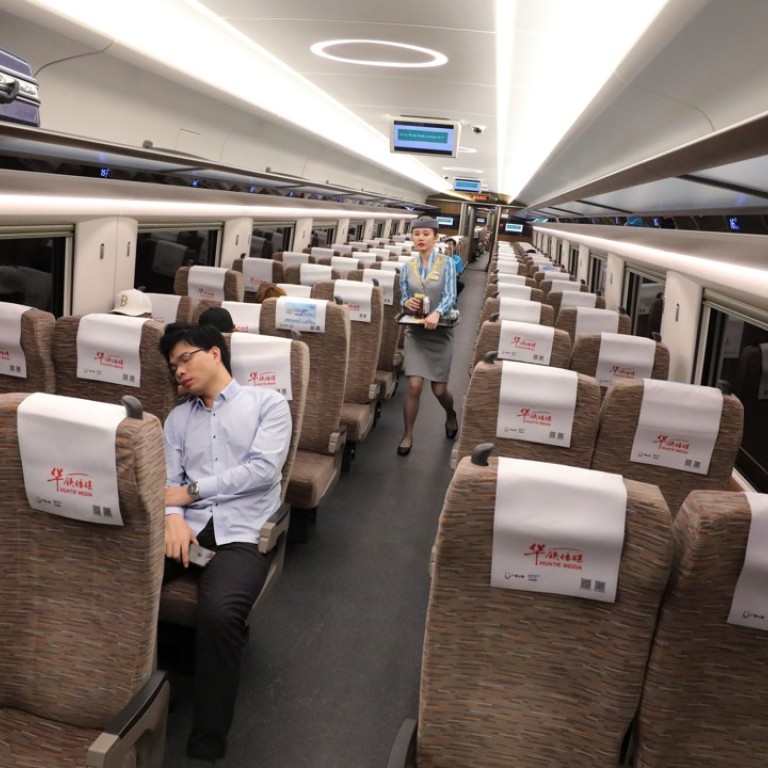
Hong Kong transport minister defends slow start to high-speed rail link and says passenger numbers will need time to hit 80,000-a-day target
Transport minister says high figures would be ‘abnormal’ and public will take time familiarise themselves with Guangzhou-Shenzhen-Hong Kong Express Rail Link
Transport minister Frank Chan Fan has defended the initial low passenger numbers on the new high-speed rail link, and said it would be “abnormal” if it had met the designed capacity on day one.
“A mega project like this will take time to build its traffic, especially as it only came into service on September 23,” he said. “I hope the public will take time to familiarise themselves with the mega infrastructure.”

The project, which opened on Sunday, cost HK$84.4 billion (US$10.8 billion), and took eight years to build, failed to meet the 80,000 estimate in the first three days of operating.
Passenger figures for Wednesday were not made public.
The traffic declined three days in row to a low of 37,820 passengers on Tuesday, or 52 per cent below the average daily estimate figure. On Monday, the figure was 46,463, which was 42 per cent less, and Sunday, at 75,517, which was 5.6 per cent lower.
During the three-day period, there were more inbound passengers than outbound. On Tuesday, inbound passengers accounted for about 60 per cent of the total, compared to about 56 per cent on Sunday. On Monday, the ratio was at 41 per cent.
Meanwhile, lawmaker Jeremy Tam said some frontline MTR Corp staff members had told him that a Hong Kong-bound train owned by China Railway, called Fuxing, was too big to stop at the No 8 platform, and the train doors could not open properly. The train was then redirected to platform No 6, he said.
“There are two questions MTR Corp needs to answer, first, whether the platforms were built or designed with flaws; second, whether the train went into a wrong platform,” he said.
The MTR Corp confirmed that the doors for a train at the No 8 platform could not be opened completely and that this had been reported to the authorities concerned. While the operator and its mainland counterpart were reviewing the issue, the model in question would temporarily stop at other platforms.
There are nine platforms for long-haul trains, and six platforms for short haul ones.

